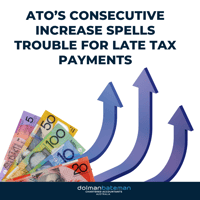Tax policies play a crucial role in any country's economic landscape, and Australia is no...
Superannuation Basics

There are two things in life you cannot escape, death and taxes. That’s how the saying goes. We should add one more to that list that we cannot escape, super.
Super is an important part of a working taxpayer’s life, so what is it? Put simply, it is money that’s saved over a lifetime to provide a retirement nest egg. It was put in place as many people blew their life savings prior to reaching retirement age placing them all onto the pension. It was also calculated that there would be a major demographic shift in the coming decades, resulting in a large increase in pension payments. The Australian Government decided that action was needed to prevent this strain on the Australian economy. They came up with a measure to try to prevent this situation from occurring, compulsory superannuation.
Super begins once you start work and your employer begins paying super for you. These payments are paid into a super fund, which is responsible for investing your money into various things such as shares, property and managed funds. The ultimate goal for super funds is to increase your investment. To assist the growth of super, complying super funds receive much more favourable tax treatment than individuals and companies.
There are two types of contributions that can be made into your super fund, each with its own set of rules and maximum cap. These are:
- Concessional Contributions – These are the super contributions which include your employer’s compulsory Superannuation Guarantee contributions (at least 9% of your ordinary earnings), any additional contributions made by your employer and if you made an agreement for salary sacrifice (essentially sacrificing part of your salary to be paid directly into your Super).These are subject to a cap. These contributions are made before-tax and is subject to a tax of 15%. If you exceed this amount, the excess contributions will be subject to a penalty tax of 31.5% (for a total of 46.5%).
- Non-concessional contributions – These are super contributions made after-tax with no deductions claimed. These are subject to a cap. Exceeding this cap subjects the excess to a tax of 46.5%. There are exceptions however such as the ‘bring forward’ rule.
See our article on Superannuation Contribution Cap Limits for more information on the cap levels and the ‘bring forward’ rule.
Now onto the most important part for a lot of people, when can I access my Super? Typical answers to this are either when you reach your preservation age (this value varies from 55-60 years old depending on when you were born) and retire, or when you turn 65.
The choice of super fund is now, more than ever, really important. The main choices everyday people will get are three types of funds: industry funds, retail funds and self-managed super funds (SMSF).
The best option would be a SMSF. As you are in charge, everything will be transparent and all investments are your decisions. They’re a lot cheaper than you think. We provide services in the SMSF sector and can help you set up a SMSF. Let us take all the administration hassles away – call us now.



